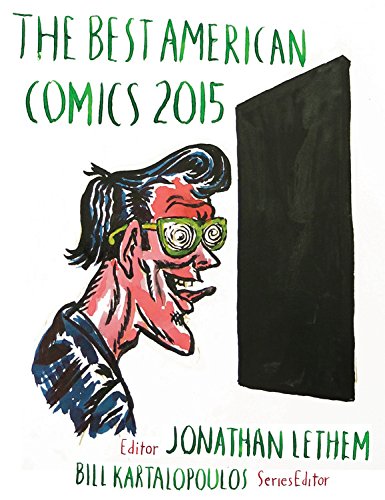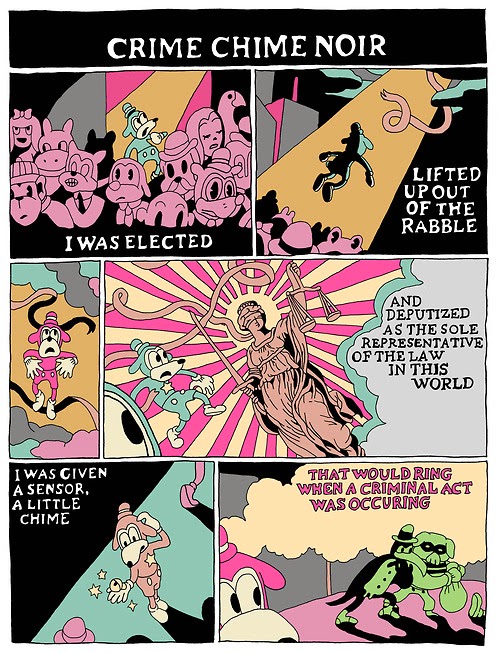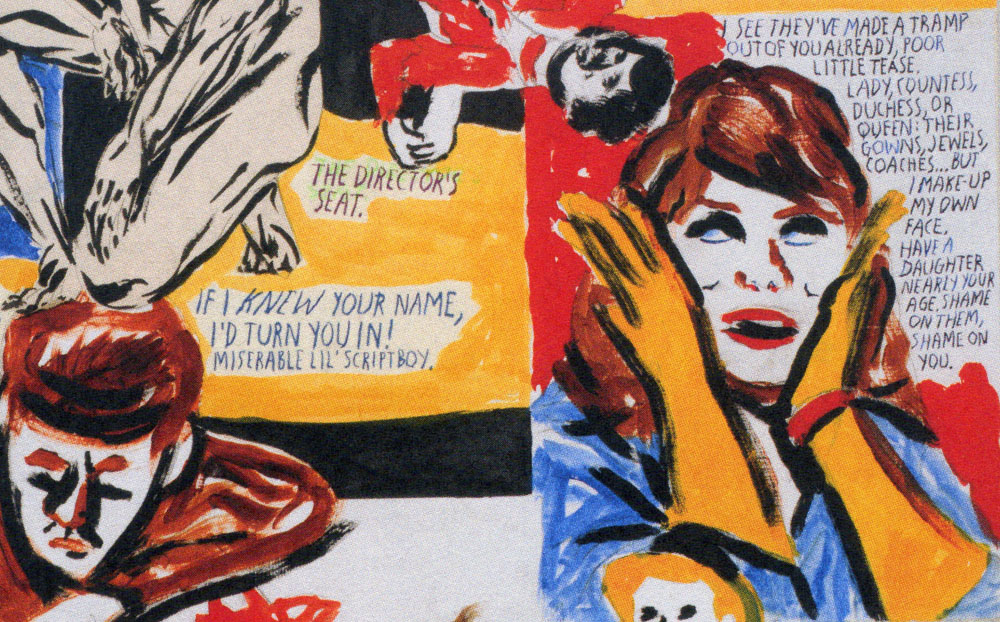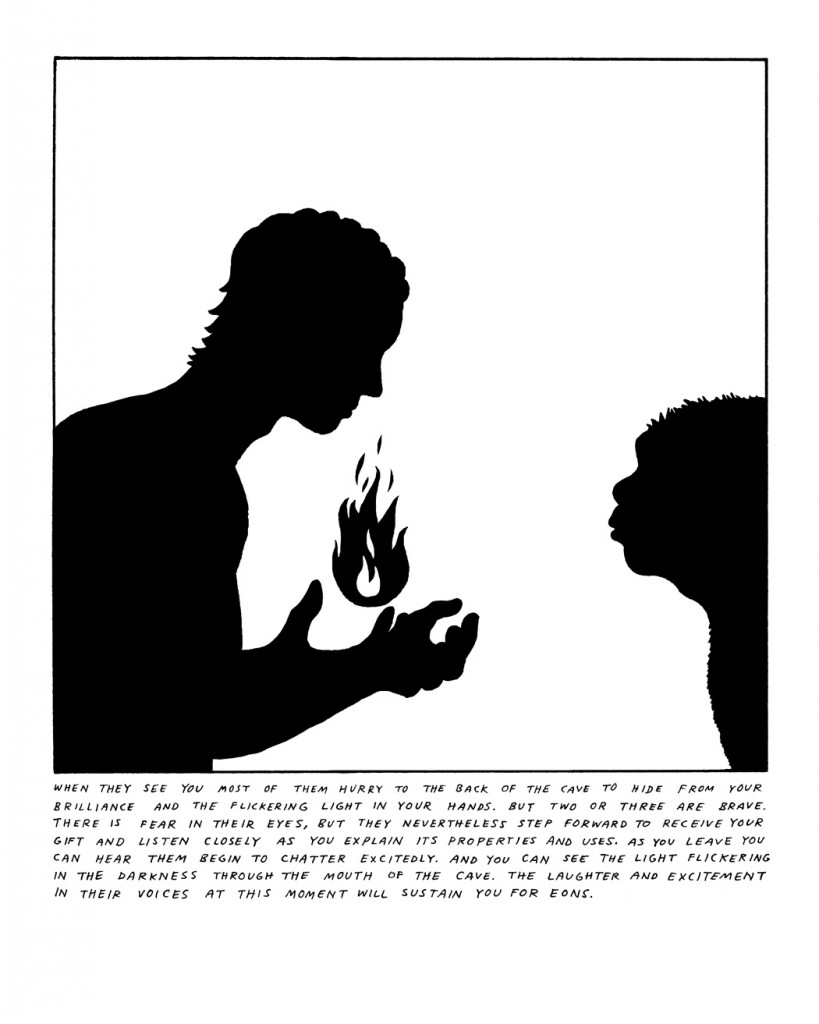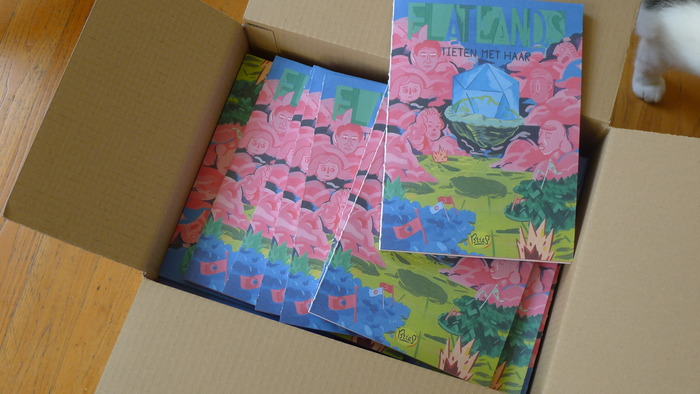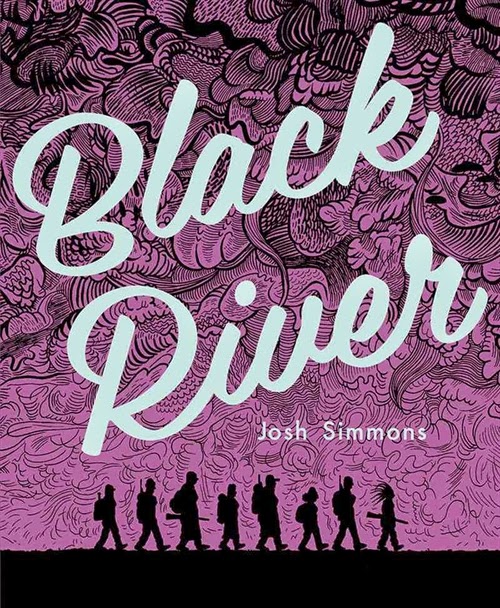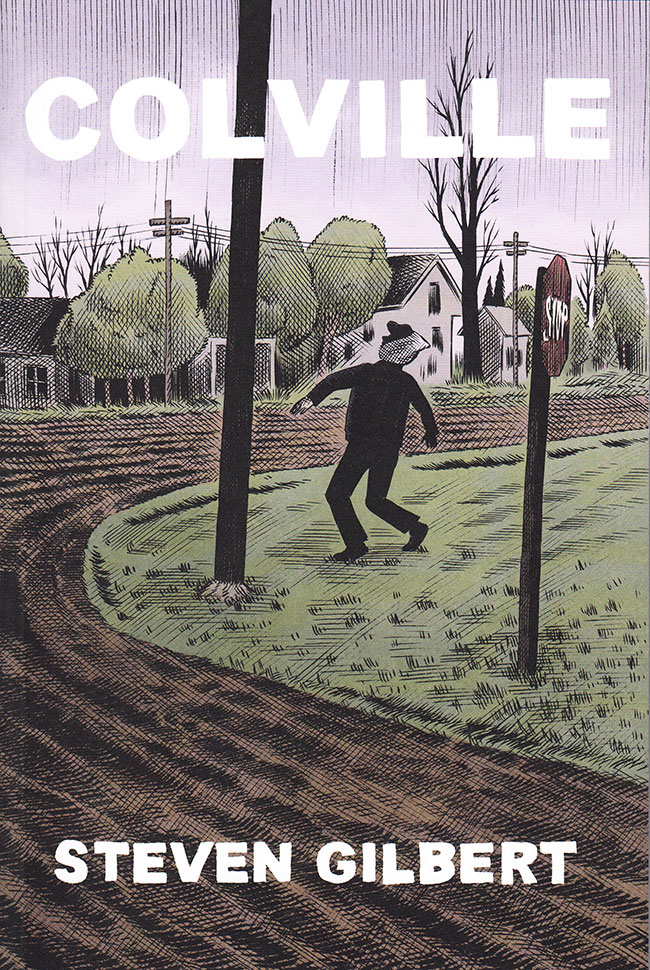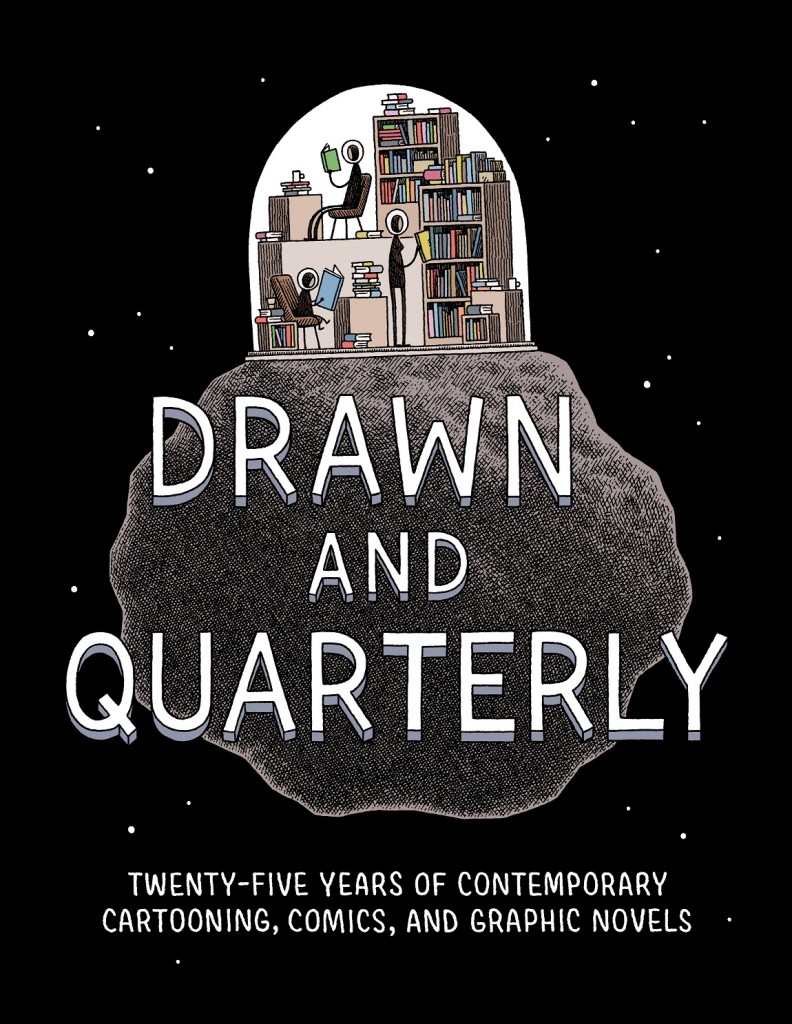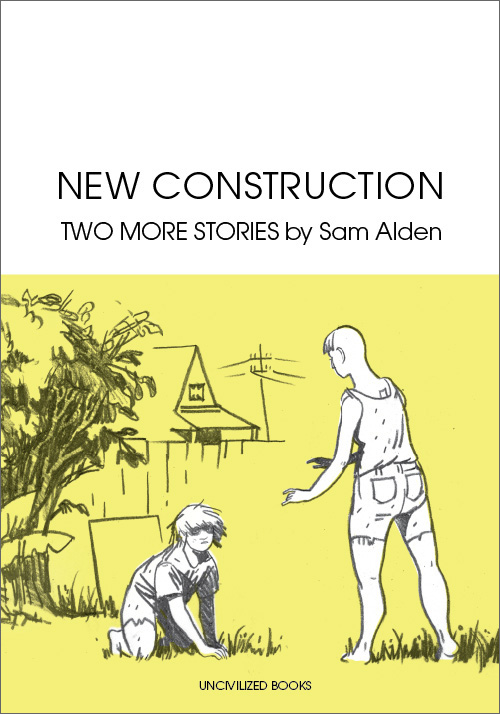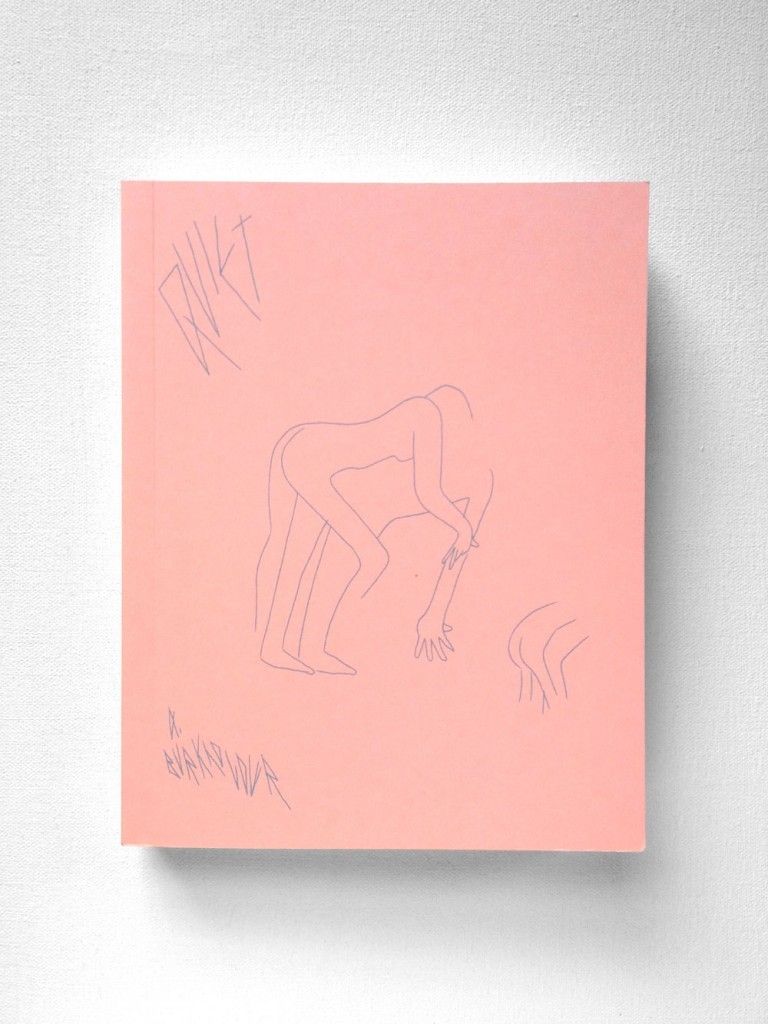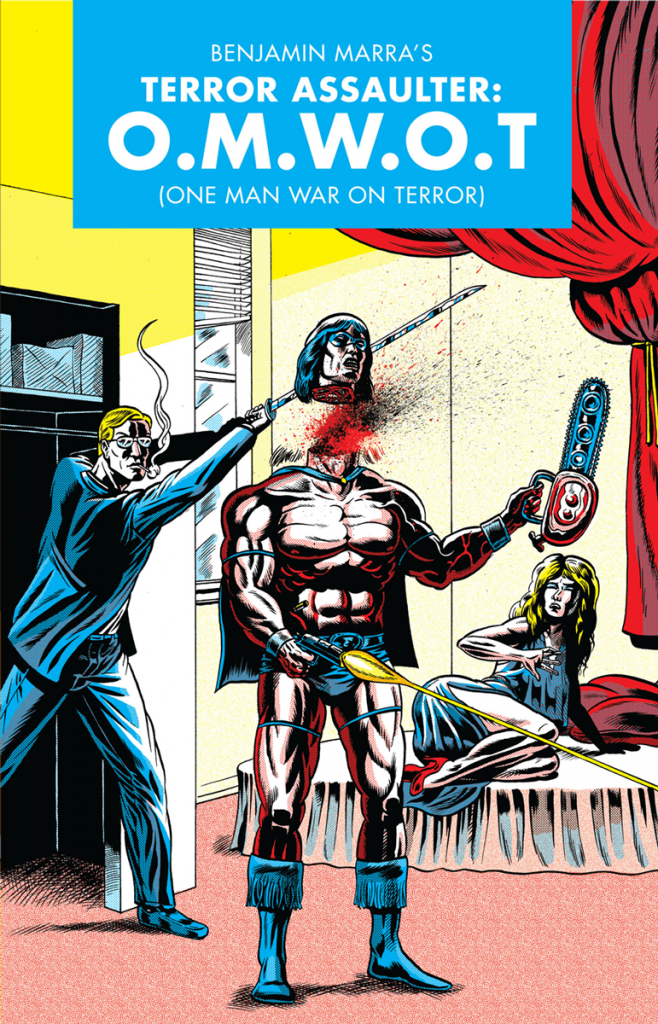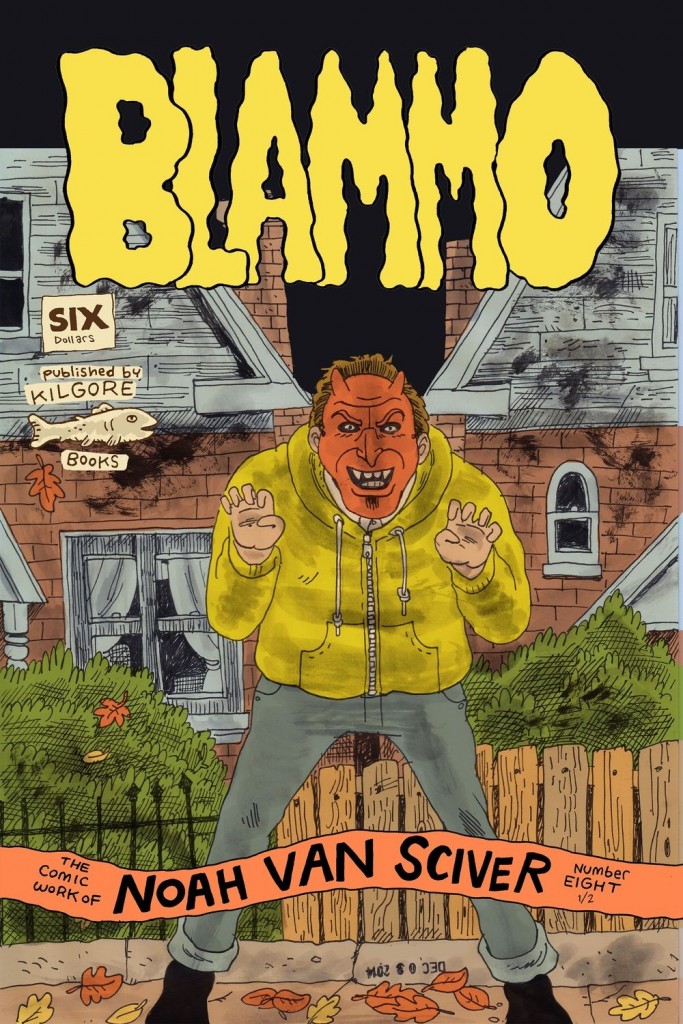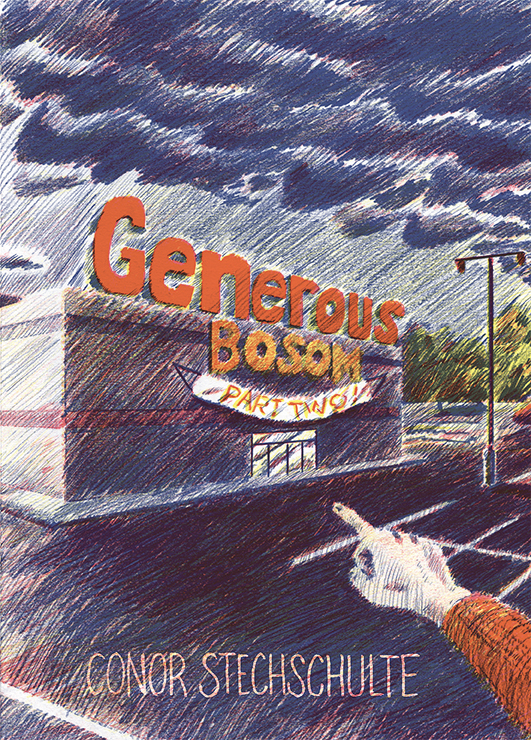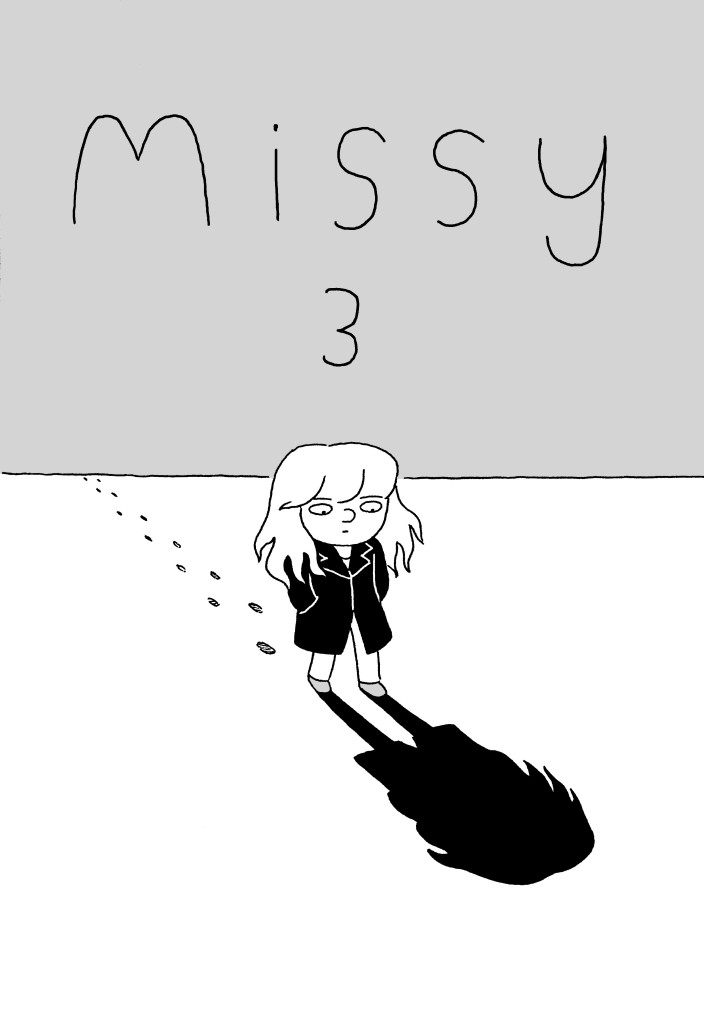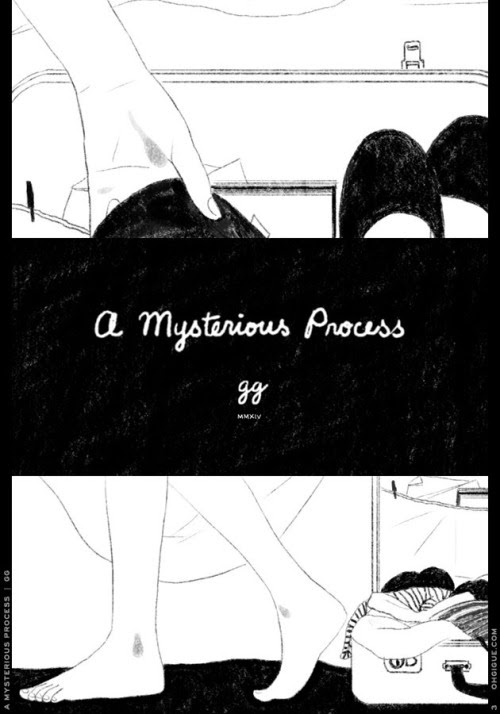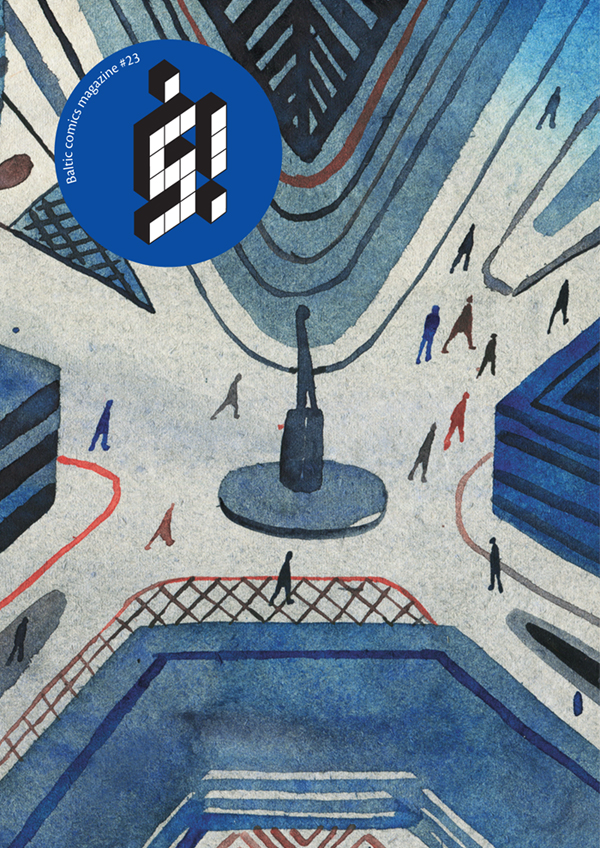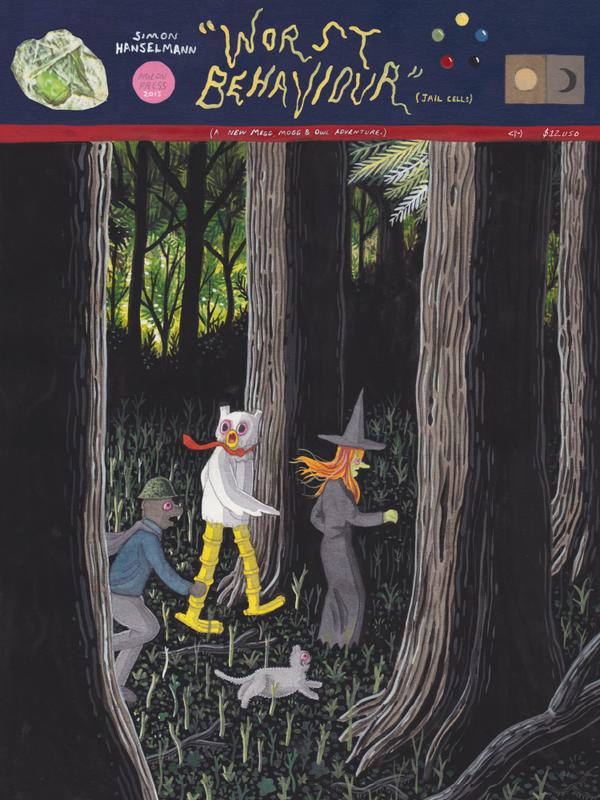“The Best American Comics 2015”
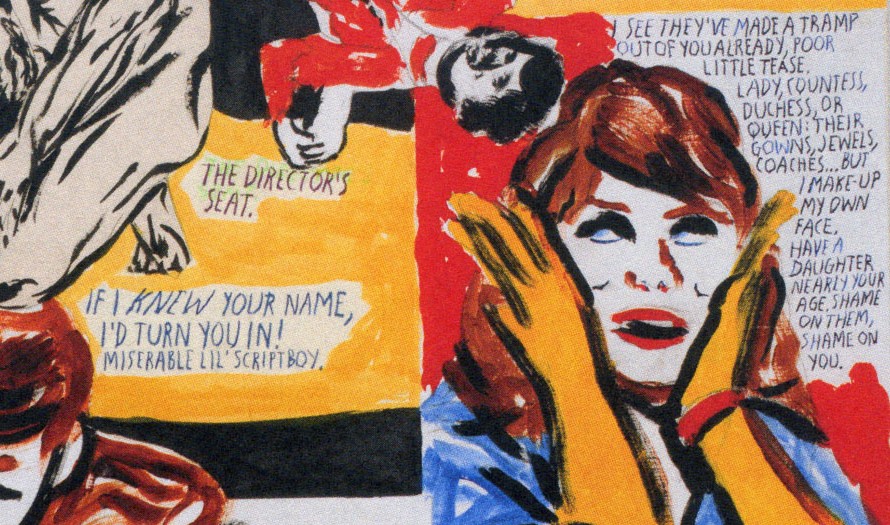
In a market where the graphic novel format prevails, where comics have to be at least 200 pages long because “otherwise I can’t publish it”, a book of nearly 400 pages as the 2015 edition of The Best American Comics is both a confirmation of how the book market has incorporated the comics world and an alien object bringing a breath of fresh air. The series is part of a diverse array of anthologies published by Houghton Mifflin Harcourt which was launched exactly one hundred years ago with The Best American Short Stories. The book about comics debuted in 2006 and has been edited over the years by Anne Elizabeth Moore, Jessica Abel & Matt Madden and now by Bill Kartalopoulos, who took the reins from 2014 edition. The series editor chooses the best comics of American cartoonists released from September 1 to August 31 of the previous year (September 1, 2013 – August 31, 2014 for this edition), and submits a list of them to the guest editor (this year the novelist Jonathan Lethem), who decides what to publish and what to mention in the Notable Comics section.
While under the easy-to-digest format of a voluminous hardcover, good to make it attractive for the bookshop market, The Best American Comics 2015 is actually a celebration of the comics language in its most natural and spontaneous forms. “Comics don’t merely combine text and image – Kartalopoulos states in the foreword – they are, at least, the very distinct product of the interaction between the formal procedures that underlie text and image: a chemical reaction that activates and consumes its constituent elements to produce a third and different thing. So it’s really not right to expect comics to enter too seamlessly into the world of literary book publishing. Comics often are books, but so are Depero Futurista and Max Ernst’s Une semaine de bonté. Comics are positioned to bring together the lessons of both the narrative and the visual arts. As such, comics should continue to have the capacity to appear alien and difficult to assimilate within literary publishing. It is an expression of what they are. To expect comics to function merely as colorful, illustrated cousins of conventional narrative fiction is a profound and wasteful act of self-denial”.
The summary of the anthology is a direct offshoot of this concept. And it’s a pleasure to find under the heading The Best American Comics works coming from the world of micro or self-publishing. So there is Josh Bayer with an excerpt from Retrofit Comics’ Theth, R. Sikoryak with his hilarious covers from Sadistic Comics published by Rotland Press, Julia Gfrörer with the self-published Palm Ash, Andy Burkholder with a short story taken from the magazine Believed Behavior, Mat Brinkman with the first part of Cretin Keep On Creep’n Creek from the Italian anthology Under Dark Weird Fantasy Grounds released by Hollow Press, Alabaster with a few pages from Mimi and the Wolves (first self-published and then reprinted by Hic & Hoc), A. Degen with the short story Crime Chime Noir saw in the first issue of Negative Pleasure’s anthology Felony Comics, Kevin Hooyman with his zines Conditions on the Ground recently collected in a book out from Floating World. And this list could go on and on.
Lethem’s sensitivity definitely helped to select innovative, imaginative, deliberately irregular comics. Comics that aren’t illustrated novels and sometimes aren’t even narrative, looking more to art than to literature. And it isn’t a coincidence that Raymond Pettibon is the author of the cover art and one of the contributors, since he expresses a particular modus operandi of contemporary art, which doesn’t intend to plagiarize the comics language (as Lichtenstein did) but to incorporate and sometimes to rape it. Kartalopoulos refers to the works of this pseudo-trend as paracomics and mentions artists such as Sol Lewitt, Ida Applebroog, Jennifer Bartlett, Keith Haring, Duane Michals, Joe Brainard. I would add the Hairy Who collective, to which Dan Nadel has recently dedicated the anthology The Collected Hairy Who Publications 1966-1969, about which I hope to write something someday.
The anthology includes also some popular and more conventional works, often presented in the form of excerpts. And as with the previous editions of The Best American Comics, it isn’t so great to read only the eight chapter of a graphic novel, but actually I don’t think there are other solutions to include long-form comics.
In addition to the artists already mentioned, the others are Roz Chast, Jules Feiffer, Diane Obomsawin, Ben Duncan, Farel Dalrymple, Anders Nilsen, Megan Kelso, Eleanor Davis, Gabrielle Bell, Henriette Valium, Ron Regé Jr., David Sandlin, Rosaire Appel, Ed Piskor, Peter Bagge, Joe Sacco, Jim Woodring, Cole Closser, Jesse Jacobs, Adam Buttrick, Anya Ulinich, Gina Wynbrandt, Esther Pearl Watson, Matthew Thurber, Noel Freibert, Blaise Larmee, Anya Davidson, Erik Nebel. And after having already experimented writing a comic (Omega The Unknown for Marvel Comics), Lethem is also drawing this time, creating the brilliant illustrated forewords to each chapter. And this adds further value to a highly recommended book.
Let’s make a list – 19/01/2016
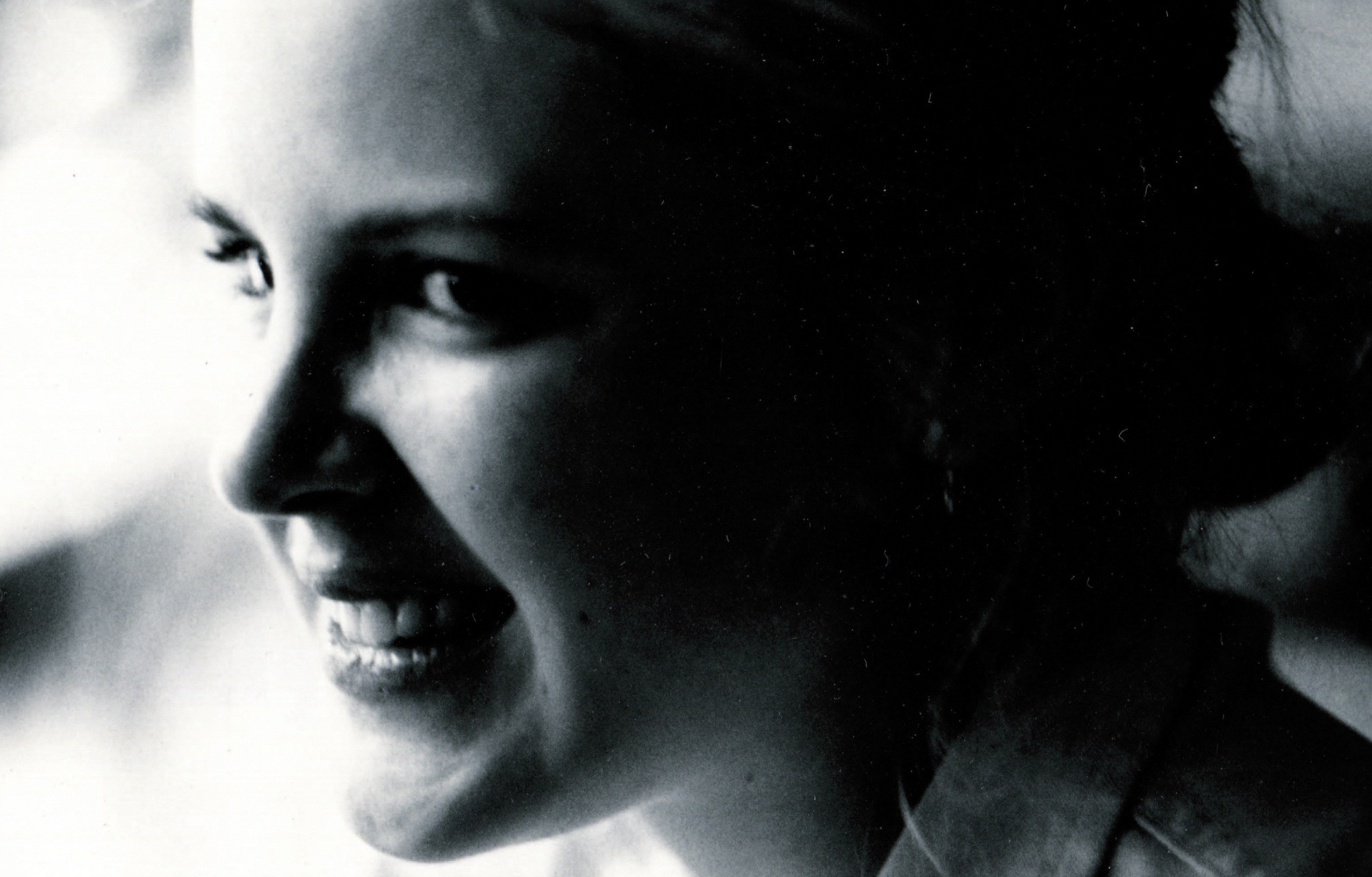
Riprendo dopo una lunga sosta la solita rubrica di notizie, segnalazioni e link vari. Non so in realtà quando e quanto riuscirò a fare post di questo genere nel corso del 2016, che mi vedrà impegnato su progetti vecchi e soprattutto nuovi. E dato che avrò poco tempo a disposizione, preferirò magari dedicarlo a recensioni, articoli di approfondimento e interviste piuttosto che alle news.
Come molti siti, anche io ho pubblicato alla fine di quest’anno una serie di “Best of” del 2015, che ho diviso tra i migliori fumetti pubblicati in Italia, i migliori comic-book/serie regolari/antologie usciti all’estero e i migliori volumi stranieri. Sì, so benissimo che soprattutto le liste straniere sono del tutto americanocentriche, ma come ho già spiegato Just Indie Comics si occupa per lo più di fumetti americani, anche perché altrimenti si chiamerebbe Seulement Comics Indépendants o qualcosa del genere. Se volete comunque dare un’occhiata a una lista più ampia e strutturata della mia, vi consiglio quella di Paul Gravett, che divide con estrema precisione i diversi fumetti usciti quest’anno nelle categorie British Graphic Novels, American Graphic Novels, International Graphic Novels, Foreign Language Graphic Novels translated into English, Manga, Reprints and Re-Editions, Books About Comics. Spero anche io, un giorno o l’altro, di avere il tempo nonché la forza di leggere tutto quello che riesce a leggere Paul Gravett. Ah, tra i migliori fumetti internazionali c’è anche il nostro Vincenzo Filosa con Viaggio a Tokyo pubblicato da Canicola.
Degno di nota anche questo articolo di Paul Tumey per The Comics Journal, che propone un viaggio nei fumetti usciti quest’anno denso di riflessioni e capace di offrire parecchi spunti per scoprire qualche fumetto diverso. Da leggere anche la lista di Nick Gazin per Vice, che mette al primo posto The Hairy Who, il volume di Dan Nadel sull’omonimo collettivo chicagoano di cui spero di dirvi in maniera più approfondita un giorno o l’altro. Articolato in ben quattro parti il Best Of di Sequential State, con tanti fumetti a me ben familiari. Da non perdere anche le sempre interessanti segnalazioni del critico/fumettista Rob Kirby, che in questa immagine fotografa alcune delle sue scelte.
Più mainstream ma comunque interessanti le liste di Mental Floss, AV Club ed Entropy, mentre se volete avere un’idea di cosa si vende in una delle librerie più fiche degli Stati Uniti, la Atomic Books di Baltimora, vi rimando al blog del negozio, consigliandovi soprattutto l’elenco dei 30 mini-comics più venduti. Il sito Columbus Alive seleziona invece 12 graphic novel realizzate da donne usciti più o meno nell’ultimo anno.
Torniamo nel nostro caro Vecchio Continente con i suggerimenti del cartoonist britannico Simon Moreton, tra cui c’è anche Garrettsville di Jenn Lisa, pubblicato in realtà nel 2014 come parte del terzo numero dell’antologia Dog City (ne avevo parlato qui). E sempre nel Regno Unito il sito del Forbidden Planet International mette insieme una serie di Best Of di critici e “addetti ai lavori”, anche qui con diversi spunti interessanti. Concludo facendo un salto in Spagna, dove Le Miau Noir ci conferma che in quanto a edizioni di materiale d’oltreoceano lì si sta molto meglio che da noi, come testimonia questo bel volume antologico dei fumetti di Julie Doucet edito dalla sempre eccellente Fulgencio Pimentel.
Basta liste e passiamo ad altro. Il cartoonist John Porcellino ha lanciato una campagna su Patreon per raccogliere fondi a sostegno della sua attività di cartoonist, distributore e anche editore. Infatti oltre a due numeri del suo ormai storico King-Cat Comics, Porcellino ha intenzione di pubblicare nei prossimi mesi una collezione di Strange Growths di Jenny Zervakis. Se potete dategli una mano, vi assicuro che ne varrà la pena.
Reso noto il programma del Fumetto Festival di Lucerna, che celebra i suoi 25 anni in primavera, precisamente dal 16 al 24 aprile. L’ospite principale sarà Joe Sacco, mentre tra le varie mostre spiccano quelle di Lorenzo Mattotti, Joost Swarte, Tom Gauld, Caroline Sury, Frémok. I dettagli per ora sono solo in tedesco, come d’altronde la presentazione delle varie mostre, mentre dell’evento legato a Sacco si parla anche in inglese.
Il nuovo numero di Art in America è dedicato in parte ai fumetti, con un saggio di Alexi Worth su Jack Kirby, un articolo di Ryan Holmberg sulle icone pop art nel fumetto giapponese e un approfondimento sulla rivista Dune di Seattle. Chissà se riuscirò a leggerlo in un modo o in un altro.
Un po’ di interviste varie: Seth, Richard Sala, Matthew Thurber. Novità editoriali: l’editore belga Bries fa uscire una raccolta del meglio del collettivo Tieten Met Haar, intitolata Flatlands (foto in basso). Mostre: la Drawn and Quarterly arriva con una collettiva alle Galerie Martel di Parigi. E anche per questa volta è tutto.
Best Comics of 2015 – Part Two

Second part of this feature about the best comics I’ve read last year. I selected here comic books and series, now I’m taking a look at long-form comics, hoping that those I have yet to read aren’t better than these listed below. As always, the order is alphabetical. This list doesn’t include Italian comics because I published a separate post here (only in Italian, sorry!).
Black River by Josh Simmons (Fantagraphics Books) – A sort of choral version of Cormac McCarthy’s The Road, Black River is a powerful, deliberately unstructured, inevitably nihilistic graphic novel. Simmons seems very comfortable with post-apocalyptic scenarios and here you’ll find some of his best artworks. Another great work of this cartoonist, who was already in my first list a few days ago with Habit #2.
Colville by Steven Gilbert (Fourth Dimension Books) – A comic book from 1997 without a follow-up, an artist who runs a comic book store in Ontario, a strong, morbid, disturbing story. The Italian cartoonist Ratigher talked about this book better than me in this review (to be translated in English soon). Not simply one of the best comics of 2015 but one of the best comics of the last twenty years.
Drawn and Quarterly: 25 Years of Contemporary Cartooning, Comics, and Graphic Novels (Drawn and Quarterly) – I must confess I haven’t still read it all, but this big hardcover book of 776 pages is unmissable for people like me who built their tastes and their love for comics in the ’90s with the earliest stapled comics from Drawn and Quarterly. Inside there are anecdotes, insights, interviews, vintage photos and many comics by the artists published during these first 25 years, with a lot of remarkable rarities.
Infinite Bowman by Pat Aulisio (Hic & Hoc Publications) – The definitive collection of astronaut David Bowman’s saga takes Kirby’s adaptation of 2001 A Space Odyssey in Fort Thunder’s basements, adding an irreverent pop vein. The book includes 75 never-seen-before pages, depicting the final struggle between Bowman and Satan. Aulisio turns chaos into storytelling with a wild and detailed style.
New Construction by Sam Alden (Uncivilized Books) – A new Sam Alden’s collection from Uncivilized Books, New Construction looks like the perfect twin of the previous It Never Happened Again but it’s much more complex in content. Inside Household and Backyard, two stories already published online and as mini-comics, with the first that is my favorite among the comics made by Alden so far.
Qviet by Andy Burkholder (2D Cloud) – After the magnificent Rudy by Mark Connery, included in my 2014’s list, another book by 2D Cloud has really astonished me. Qviet is the collection of Andy Burkholder’s avant-garde strips, where sex and comics copulate generating multiple orgasms of ideas. One of those comics that can only be comics, if you know what I mean. I published a little preview here.
Sky in Stereo by Mardou (Revival House Press) – One of the best mini-comics in recent years gets the graphic novel treatment with the first of two volumes published by Revival House Press. Sky in Stereo is an autobiographical story full of inventive, with great dialogues and a wise, mature, exciting writing. For me the best comic of the year along with Colville. And the second and final book is already scheduled for this year. I interviewed Mardou here.
Terror Assaulter: O.M.W.O.T. by Benjamin Marra (Fantagraphics Books) – A satire of the American obsession with terrorism after September 11th, O.M.W.O.T. is a strange, original, controversial object, made with a tasty pop art style. Marra isn’t afraid to mix political issues, violence, paradoxical situations and explicit sex.
Ur by Eric Haven (Adhouse Books) – “These are absolutely brilliant and hilarious comics, where Haven blends superheroes parody, the classics from the underground, the strange worlds of Fletcher Hanks, the rhythm of newspaper strips and… explosive diarrhea. But the very leitmotiv of the book is the author’s fascination for absurd, paradox and exaggeration”. Sorry for the self-quote, but I presented Ur in this way as one of the potential best comics of 2015. And the book has solidly maintained its position. If there were more comics like this, this would certainly be a better world (at least for me).
Volcan (self-published) – Ok, there are some derivative contents in here, but this stylish risograph anthology with silkscreen cover, sequel of the previous Lagon, is a beautiful object full of colors, graphics solutions, amazing ideas, bizarre and sometimes disturbing stories. These are avant-garde comics in the tradition of the various The Ganzfeld, Kramers Ergot, Mould Map, with authors such as Fletcher Hanks, Léo Quievreux, Aidan Koch, C.F., Olivier Schrauwen, Yuichi Yokoyama and many others. Texts are in French but there is an English translation booklet.
Best comics of 2015 – Part one
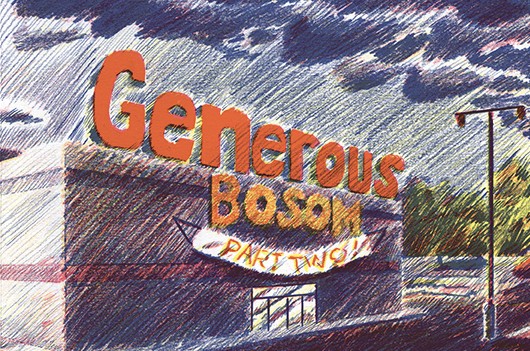
First part of this feature about the best comics I’ve read last year. In this post, I’m talking about the best comic books and series, while in a next post I’ll select the best long-form books. The order is alphabetical. This list doesn’t include Italian comics because I published a specific list here (only in Italian, sorry!).
Blammo #8 1/2 by Noah Van Sciver (Kilgore Books) – Quintessence of the most multifaceted and sometimes odd Vansciverism, the eight-and-a-half issue of Blammo anthology is the perfect compendium to books like Saint Cole and Youth Is Wasted. Van Sciver has also published Fante Bukowski and the autobiographical mini My Hot Date this year, producing two more chapters of his high-quality bibliography.
Crickets #4 by Sammy Harkham (self-published) – I still haven’t received the recently published fifth issue of Crickets, and I’m very curious to find out if Sammy Harkham managed to keep the high standards of this fourth output, that sees him at the top of his production and also of contemporary comics. The new chapter of Blood of the Virgin is dense, packed with great dialogues and beautifully illustrated.
Generous Bosom #2 by Conor Stechschulte (Breakdown Press) – Conor Stechschulte is one of the greatest authors of comics nowadays but few are aware of it. The news is well known to the British guys of Breakdown Press, who recently released the second chapter of his Generous Bosom. I will try to talk about Stechschulte’s comics in more detail as soon as possible.
Habit #2 by Josh Simmons and others (Oily Comics) – Josh Simmons rounds up an interesting team composed of Tom Van Deusen, Eric Reynolds, and Ben Horak to tell a series of repulsive but also amusing and paradoxical situations. A sort of essay about the topic of “good taste”, with the initial The Incident at Owl’s Head representing the top of the collection.
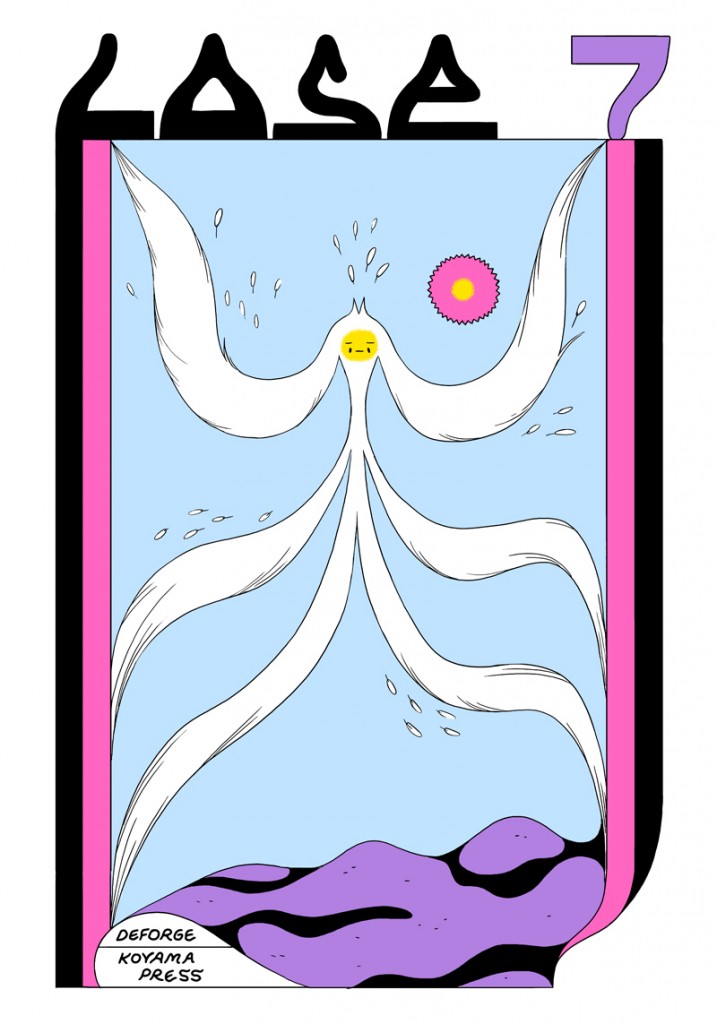 Lose #7 by Michael DeForge (Koyama Press) – Lose #6 was in my list of the best comics of 2014, so it’s easy to say DeForge reserves his best work to this series, this time with a story of a father, a daughter, and a rediscovered twin. And now you should keep an eye on Big Kids, out in February from Drawn and Quarterly.
Lose #7 by Michael DeForge (Koyama Press) – Lose #6 was in my list of the best comics of 2014, so it’s easy to say DeForge reserves his best work to this series, this time with a story of a father, a daughter, and a rediscovered twin. And now you should keep an eye on Big Kids, out in February from Drawn and Quarterly.
Missy #3 by Daryl Seitchik (self-published) – The catastrophic and visionary ending of the previous Middle School Missy (see this post about the comics from SPX 2014) finds a powerful development in this new Daryl Seitchik’s diary comic. The stories are becoming blurred to make room for an almost abstract approach, in which the theme of loneliness is investigated in a few lines and words. Beautiful as only seemingly simple comics can be.
A Mysterious Process by GG (self-published) – I’ve already defined it as one of the best comics of the year, since it was serialized on Comics Workbook’s Tumblr between 2014 and 2015, and then it was printed some months after. The cartoonist known only as GG has a strange effect on me, because I think there is something incredibly fascinating in her stories but also something annoying. However, I’ve no doubts about A Mysterious Process, a dark, enigmatic, metaphorical, powerful and evocative story in cinemascope, with subtitles reporting dialogues. You can read it here.
š! #23 by Various Artists (kuš! komikši) – Sometimes change is good and this is definitely confirmed by the 23th issue of this Latvian anthology, that leaves temporarily the usual short-story format to offer only five comics, all focused on the victims of Nazism and all by European artists. In addition, a postscript by Ole Frahm explaining genesis and development of the project, which included historical research and workshops with the artists. A particular praise goes to Paula Bulling and Vuk Palibrk, authors of the two best episodes of the collection.
Windowpane #3 by Joe Kessler (Breakdown Press) – I saw the original artworks from Windowpane #3 at BilBOlbul, where Breakdown Press had an exhibition and Richard Short and the same Joe Kessler were guests. The artworks showed the different phases that led to this beautiful risograph print. The story is the first part of a longer narrative and is pleasantly uncomfortable in the style of Conor Stechschulte’s comics.
Worst Behavior by Simon Hanselmann (Pigeon Press) – As always without much fanfare, Alvin Buenaventura’s Pigeon Press published this little paperback containing the longest story so far of Megg, Mogg, and Owl. These 52 pages in black and blue follow the usual dynamics of Hanselmann’s comics but the crescendo of assorted oddities is absolutely irresistible.

